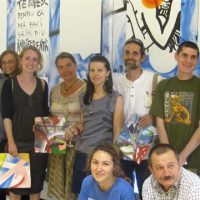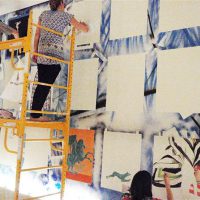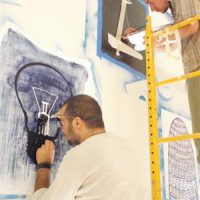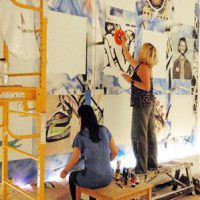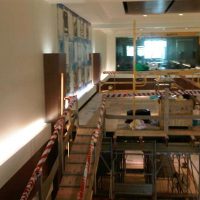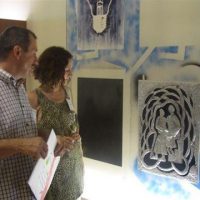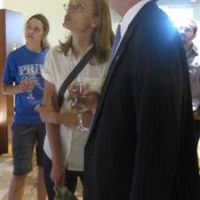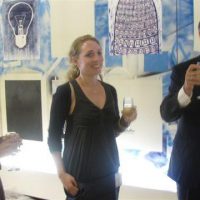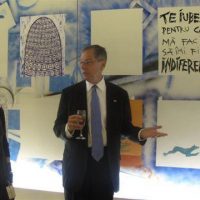During the winter of 2011, the chief curator at ART in Embassies, Virginia Shore, invited me to create a proposal for a mural at the new US Embassy in Bucharest. As I began the preparations and concept sketches, I questioned my approach. Why would I make a work as an individual artist in an Embassy context? Over the past three years, I made a number of temporary murals/wall paintings/tattoos, which is what I call my smaller wall paintings, in galleries and art spaces. However, the Embassy context was an exciting challenge.
While I had never been to Romania, I have a dear Romanian friend who now lives and works in Washington D.C. He introduced me to Romanian history, writers, composers, artists, and jokes – which often challenged my sensibility and piqued my attention. I was also interested in learning about early modern Romanian Architecture and the roots of Dada. For Drafts and Open Windows, I imagined that a wall of a building would reference contemporary art, architecture, and community. I was curious to see what Romanian artists would propose if they were invited to produce a work in a newspaper-sized space. I thought of it as an experiment or a wall of “signs” – as one might encounter the variable windows of residents in a large apartment building.
Each rectangle is the exact size of the International Herald Tribune (bottom two rows) or The Washington Post (top row). The grouping of artists can be thought of
as a “collective collaboration”, an editorial commentary, or an exchange of ideas and/or cultures. How do people around the world (mis)understand and (dis)connect with others? It is not by media? Be it by way of an individual or en masse – we are connected in many ways via chance, personal relationships, music,literature, art, and exposure to the same news through media, journalism, and conversations.
I invited Romanian artists to join me on the wall at the American Embassy with their perspectives and voices. The artist proposals could be text-based, political,figurative or nonobjective, historical, documentary, philosophical and/or candid, poetic, punk, abstract, research based, and so on. The proposals could be from an existing body of work or a new piece to be read, seen, and experienced in a political institution. The blue frame/architecture/grid is a ground that I spray painted for structure: an architecture of sorts, which could be altered or changed in areas to better suit
other artists’ ideas.
Half of the 27 spaces are left empty or open, and depending on one’s perspective. These spaces represent what is covered, missing, or yet to come. For me, the empty spaces are as important as the painted spaces. They are philosophical and practical spaces to breathe, imagine, and rest on history and potential.
The Romanian artists are Marina Albu, Daniela Balaneanu and Stefan Constantinescu, Maria Bordeanu, Miruna Budisteanu, Adriana Elian, Liviu Epuras, Bogdan Mateias, Lisandru Neamtzu, Marilena Preda Sanc, Cristian Raduta, Radu Tudoroiu, and Aurel Vlad.
